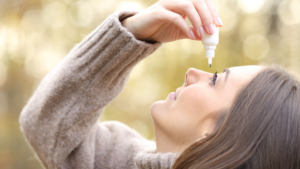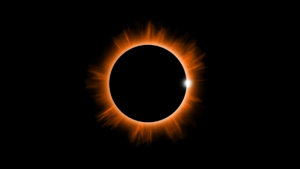June is Cataract Awareness Month! The Optometrists of Colorado want to make you aware of this common and natural part of aging. Did you know, cataracts are the leading cause of blindness in the world? It’s true! In fact, in the U.S., nearly 70% of people over the age of 75 have cataracts or have undergone cataract surgery¹. You might be wondering “what is a cataract?” A cataract is a clouding of the lens inside the eye that can affect one or both eyes resulting in reduced clarity. To keep your vision healthy and clear, it is important to get an annual comprehensive eye exam, especially if you are over the age of 55!
Risk Factors
Certain lifestyles and genetics can play a factor in your risk of cataract development.
- Family history of cataracts
- Excessive exposure to sunlight
- Smoking
- High blood pressure
- Diabetes
- Obesity
Thankfully, you can combat some of the risk factors by wearing UV-blocking sunglasses to avoid excess sunlight exposure. Also, eating a balanced diet with foods high in Vitamin C while also partaking in a healthy and balanced lifestyle!
Diagnosis
To determine whether you have a cataract, your doctor will review your medical history and symptoms, and perform an eye examination. Your doctor may conduct several tests, including:
- Visual acuity test: A visual acuity test uses an eye chart to measure how well you can read a series of letters. Using a chart or a viewing device with progressively smaller letters, your eye doctor determines if you have 20/20 vision or if your vision shows signs of impairment.
- Slit-lamp examination: A slit lamp allows your eye doctor to see the structures at the front of your eye under magnification. The microscope is called a slit lamp because it uses an intense line of light, a slit, to illuminate your cornea, iris, lens, and the space between your iris and cornea. The slit allows your doctor to view these structures in small sections, which makes it easier to detect any tiny abnormalities.
- Retinal exam: To prepare for a retinal exam, your eye doctor puts drops in your eyes to dilate your pupils. This makes it easier to examine the back of your eyes, otherwise known as the retina. Using a slit lamp or a special device called an ophthalmoscope, your eye doctor can examine your lens for signs of a cataract².
- Glare testing: This test re-creates the effects of headlights to see if that kind of light reduces your best corrected vision.
If you notice clouding in your eye and blurring in your vision, make an appointment with an eye doctor.
Treatment
Cataract surgery is quick and nearly painless. The surgery can be done in around 30 minutes and is one of the most common surgeries performed in the United States. During the surgery, your doctor will remove your natural lens and replace it with an artificial intraocular lens (IOL), this will significantly improve your blurred vision! There is a very high success rate for this surgery, leaving patients with improved quality of life. The good news is that cataract surgery with basic lens replacement is often covered by Medicare and other insurance companies.
Ultimately, cataracts are natural and very common! It’s important to keep your eyes healthy and vision clear for the best possible quality of life, and eye doctors are able to help with this. Find a doctor near you, so you can ensure you’re seeing your best!
References:

Eye Health and Sport Safety
May 7, 2024
No Comments
Summer is nearly here, and kids are excited to go out and play! But with this we need to ensure that their eyes and vision

Are Your Eyes Ready for the Upcoming Total Solar Eclipse?
March 6, 2024
No Comments
A total solar eclipse¹ will cross the United States on April 4, 2024, passing over Texas, and traveling through Oklahoma, Arkansas, Missouri, Illinois, Kentucky, Indiana, Ohio,

The Time Has Come to Use Your Health Benefits!
November 6, 2023
No Comments
Have you made good use of your health benefits this year? If not, consider using your Health Savings Accounts (HSA) or Flexible Spending Accounts (FSA)

Winter is Coming – So Are Dry Eyes
October 5, 2023
No Comments
Brace yourselves, winter is coming and so are dry eyes! Winter weather conditions are one of the leading causes for dry eye symptoms. This is

Eye Safety and the Solar Eclipse
September 12, 2023
No Comments
Did you know that there will be an annular solar eclipse happening on October 14, 2023? That’s right, and most of Colorado will be able

Time to Use Your Health Benefit Funds
October 31, 2022
No Comments
The end of the year is fast approaching, and your health benefits are expiring! You might already be feeling anxiety for the upcoming holiday season,